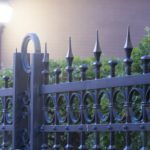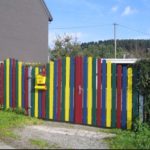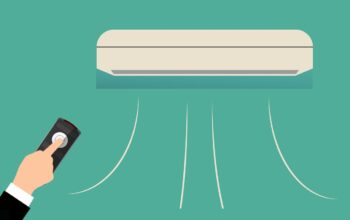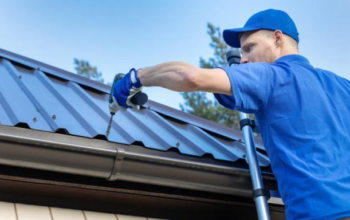The weather across the country can be unpredictable and severe. Just recently, we witnessed strong wind in some parts of the UK, causing damages and destruction. We have seen tree trunks scattered around, power lines torn, structural damages to our residential premises. Our fences are not excluded.
Homeowners have continued to endure their fences getting destroyed or blown over by strong winds. Hence, the reason for this article. The cost of replacing fences each time they are damaged by strong wind is high, so knowing which fence panel can withstand the strongest wind can be a great solution.
Nobody wants to lose sleep about their fence condition when the wind is blowing ferociously outside. This is the importance of having superior quality and a strong fence. A poorly installed and weak fence can easily get blown over by even a moderate breeze. A strong fence will not only enhance the security and safety of your property but give you peace of mind. So if you’d like to ensure that your fences are properly installed, it’s best to contact local fence companies for the job.
Today, there are lots of fencing materials available in the market. Most are aesthetically pleasing and can add value to your property. However, your priority should be a fence material that can withstand extreme weather conditions and require low maintenance. Installation of composite fence panels, for instance, can enhance your home resale value.
Let’s explore the different fencing options materials that can withstand the strongest wind.
Aluminium fences
Aluminium fences are suitable for windy areas because they are very strong, and have spaces between their posts that permit free airflow. This reduces the tendency of damage as the wind moves. Aluminium fences are of superior strength, quality and durability. They can also enhance your property’s curb appeal.
One thing worthy of mention is that aluminium fences, as other metallic fences, can rust easily, after years of exposure to moisture, humidity and wetness. Try as much as possible to use a sealant on your metal fence during rainfall.
Composite Fences
Composite fences are stronger and more resilient than timbre wooden fencing material. Combining the strength of plastic and wood, it is sturdier and more flexible than wooden material. This means they are ideal for areas with the strong wind because they won’t splinter, break or crack during windy spells. Composite fence panels also have other advantages. They are resistant to moisture, rot and pest attacks.
Composite fences can last long as they have a very long warranty period. They are also low-maintenance. This means you won’t have to invest cash, effort or time to keep them looking beautiful. Though you can get occasional grass stains, a simple wash with a garden hose will keep this type of fence clean and neat.
Chain Link Fence
While a chain-link fence isn’t always ‘first’ on homeowners’ minds when planning for a fence installation, it can withstand heavy wind. Chain link fences possess open link which enables the wind to flow freely without any damage to any part of the fence. Chain link fences are also very durable and sturdy. They are impervious to harsh temperature and pest attack. On the other hand, wooden fences are prone to destruction by these exact elements.
A drawback of chain link fence is that it is see-through, offering no privacy to a property. It also lacks the aesthetic appeal of other fencing types. It reminds one of prison yards.
Picket Fences
Picket fences are one of the most popular types of fences in the western world. It is regarded as inviting and hospitable. One reason for its widespread use is the fact that it is visually appealing. However, picket fences do not provide adequate privacy because they have gapped slats. This feature contributes to its ability to withstand strong wind because the slat permits the free flow of wind, diminishing the destructive impact of wind.
A disadvantage of picket fences is that they are high-maintenance. This is because they are primarily a wooden material. Picket fences are prone to rot, meaning you would need to treat it with preservative to elongate its lifespan. Using sealant can also prevent it from moisture during rainfall or humid temperature.
How to protect your fence from wind damage
If you reside in a windy area, then your fence may be prone to damage. There are ways you can reduce the likelihood of wind damage to your fence. Read below to explore them:
Trees near your fence need to be trimmed
Falling tree branches can wreak havoc on your fence. A tree branch propelled by strong airflow can damage your fence. So, to protect your fence from wind damage, it is essential to trim your tree branches before the start of a windstorm. Also, ensure that your trees are firm and strong and won’t be uprooted or cracked during the wind bursts.
Make repairs
To guarantee your fence’s structural integrity and strength, always make the necessary repairs — no matter how minor. Any fencing panel that is damaged, rot, weak or collapsing needs to be replaced.
Use preservatives
During the summer, ensure you use preservative on your fence to prevent rot. This is especially for picket fences. Wooden picket fences are prone to rot, which can cause them to deteriorate and become weak. So ensure to protect your fence from mould and moisture by using preservative and sealant.
Related Posts












